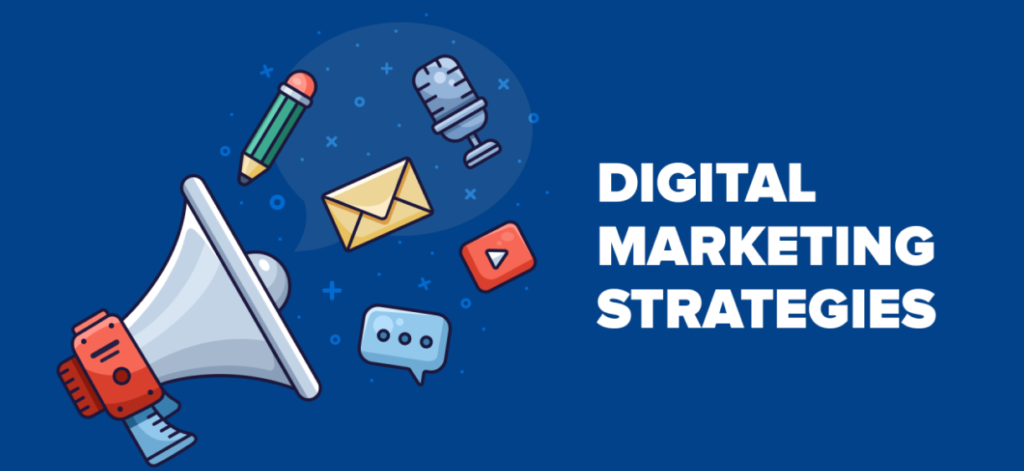In today’s fast-paced digital world, youth marketing is evolving rapidly. With Gen Z and younger millennials dominating consumer markets, businesses must adapt to their behaviors, preferences, and values. Traditional advertising methods no longer hold the same power; instead, authenticity, personalization, and social responsibility drive engagement.
In this blog, we will explore the top 10 trends shaping youth marketing in 2025. Whether you are a business owner, marketer, or brand strategist, understanding these trends will help you connect with the younger generation effectively.
1. Authenticity and Transparency Matter More Than Ever
Young consumers demand genuine and transparent marketing. They are skeptical of traditional advertising and can easily detect inauthenticity. Brands that engage in dishonest practices or misleading claims are quickly called out on social media.
How to Leverage This Trend:
✅ Showcase real people and real stories in your marketing campaigns.
✅ Be transparent about your business practices, sourcing, and sustainability efforts.
✅ Avoid over-polished, scripted advertisements—opt for natural, raw, and behind-the-scenes content.
Example: Brands like Patagonia and Glossier have built trust by being open about their environmental impact and engaging with their audiences authentically.
2. Short-Form Video Dominates (Again!)
With platforms like TikTok, Instagram Reels, and YouTube Shorts, short-form videos are the go-to content format for young consumers. These quick, engaging videos hold attention better than long-form content.
How to Leverage This Trend:
✅ Create bite-sized, visually appealing videos that entertain or educate.
✅ Jump on viral challenges, trends, and memes to stay relevant.
✅ Focus on storytelling within the first 3 seconds to grab attention.
Example: Duolingo, the language-learning app, uses humorous and quirky TikTok videos to engage young users, increasing brand recall and user interaction.
3. AI-Driven Personalization is the New Norm
Younger generations expect brands to understand their preferences and deliver hyper-personalized experiences. AI and machine learning play a crucial role in tailoring recommendations, offers, and ads.
How to Leverage This Trend:
✅ Use AI-powered tools to analyze user behavior and provide personalized content.
✅ Leverage chatbots and virtual assistants for real-time customer interaction.
✅ Offer tailored recommendations based on user interests and past interactions.
Example: Spotify’s AI-driven “Discover Weekly” playlist personalizes music recommendations based on user preferences, making users feel understood and valued.
4. Influencer Marketing is More About Micro-Influencers
While celebrity endorsements still hold power, micro and nano-influencers (1,000–100,000 followers) now have greater trust and engagement levels among young audiences.
How to Leverage This Trend:
✅ Partner with smaller influencers who have a niche and highly engaged audience.
✅ Focus on authenticity rather than just reach—users trust relatable influencers.
✅ Encourage influencers to create real, unscripted content about your brand.
Example: Small beauty brands like Rare Beauty collaborate with micro-influencers rather than mega-celebrities, leading to higher conversion rates.
5. Sustainability and Social Responsibility Drive Brand Loyalty
Young consumers care about the environment and expect brands to take a stand on social issues. They prefer companies that align with their values, whether it’s sustainability, inclusivity, or ethical business practices.
How to Leverage This Trend:
✅ Implement eco-friendly practices and communicate them clearly.
✅ Support social causes and engage in corporate social responsibility (CSR).
✅ Be genuine—performative activism can backfire.
Example: Nike’s “Move to Zero” campaign focuses on sustainability by using recycled materials in its products, resonating with eco-conscious youth.
6. The Rise of Social Commerce (Buying Directly on Social Media)
Social media platforms like Instagram, TikTok, and Facebook are no longer just for content—they are full-fledged shopping destinations. Young shoppers prefer seamless, in-app purchase experiences.
How to Leverage This Trend:
✅ Set up Instagram and TikTok Shops to sell products directly on social media.
✅ Use influencer partnerships to promote products in a natural, engaging way.
✅ Invest in livestream shopping, where influencers showcase products in real time.
Example: Shein and H&M have mastered social commerce, allowing users to shop directly from Instagram and TikTok without leaving the app.
7. The Metaverse and Virtual Experiences Are Growing
With the rise of VR, AR, and metaverse platforms, brands are experimenting with immersive experiences to engage young audiences.
How to Leverage This Trend:
✅ Host virtual events, concerts, and product launches in the metaverse.
✅ Create AR filters and experiences for platforms like Instagram and Snapchat.
✅ Offer digital collectibles (NFTs) to create brand loyalty.
Example: Gucci created a virtual fashion experience on Roblox, where users could buy and showcase digital clothing items.
8. Meme Marketing is a Powerful Engagement Tool
Memes have become a universal language among Gen Z and millennials. Brands that use humor and relatable content can generate viral engagement.
How to Leverage This Trend:
✅ Stay updated with meme trends and integrate them into your content.
✅ Use humor in marketing, but ensure it aligns with your brand voice.
✅ Encourage user-generated content by creating meme challenges.
Example: Brands like Netflix and Wendy’s use witty and relatable memes to keep their audiences engaged and entertained.
9. The Shift Towards Ethical Data Collection
Young consumers are more aware of data privacy concerns and demand transparency in how their information is used. They are skeptical of brands that misuse personal data.
How to Leverage This Trend:
✅ Clearly communicate how you collect and use customer data.
✅ Give users more control over their privacy settings.
✅ Focus on first-party data collection instead of relying on third-party cookies.
Example: Apple’s App Tracking Transparency feature allows users to opt out of app tracking, forcing brands to adopt ethical data collection practices.
10. Community-Driven Marketing is the Future
Younger generations value community and connection. Instead of just selling, brands must focus on building communities where users can interact and engage.
How to Leverage This Trend:
✅ Create branded online communities, such as private Facebook groups or Discord servers.
✅ Encourage user-generated content and active participation.
✅ Develop loyalty programs that reward community engagement.
Example: Gymshark built a strong fitness community through social media engagement, empowering young users to share their workout journeys.
Conclusion: Adapt and Stay Ahead
Youth marketing in 2025 is all about authenticity, personalization, and community-building. Brands that understand these trends and adapt their strategies will successfully engage young consumers and build lasting relationships.
Key Takeaways:
✔ Be authentic and transparent to earn trust.
✔ Invest in short-form videos and influencer marketing.
✔ Focus on AI-driven personalization and social commerce.
✔ Support sustainability and social causes.
✔ Leverage memes, virtual experiences, and ethical data practices.
By staying ahead of these trends, brands can connect with young audiences more effectively and build loyal customer bases.
Are you ready to revolutionize your youth marketing strategy? Let us know in the comments! 🚀


